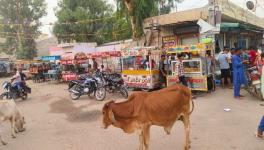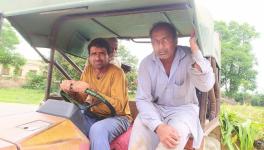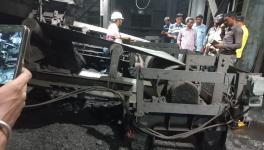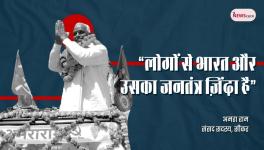#WorkersStrikeBack: 377 Mine Deaths in 3 Years of Modi Raj

Representational Image. | Image Courtesy: Wikipedia
NEW DELHI: As the Supreme Court gets ready to hear on Friday the government’s response about the steps it has taken to rescue the 15 miners trapped inside an illegal rathole mine in Meghalaya for three weeks now, India’s record in preventing mining deaths is deplorable.
According to the Ministry of Labour and Employment, 377 workers involved in mining of coal, minerals and oil were killed in accidents between 2015 and 2017. The figures were given in a written response to a question raised by Laxman Giluwa, a Bharatiya Janata Party (BJP) MP from Jharkhand.
Out of the 377 deaths, 129 occurred in 2017 alone, while, as many as 145 occurred in 2016 and 103 in 2015. The highest number of casualties due to accidents in mines – 210 – occurred in coal mines, accounting for more than half of the total number of deaths. Jharkhand, over a span of three years – 2015, 2016 and 2017, accounted for the highest number of deaths – 69 – in accidents inside the mines.
Telangana recorded 32 deaths in these three years while Madhya Pradesh registered 29, and during the same period, 152 persons died in accidents in metal mines across the country.
Rajasthan, one of the major mineral-producing states in the country, accounted for 48 deaths with in 2015, 5 in 2016, and 23 in 2017, while Andhra Pradesh recorded 29 deaths. During this period, 15 deaths were reported in oil mines, most of them occurring in Assam and Gujarat.
The data was tabled in the Lok Sabha at a time when multiple agencies are involved in the rescue of 15 miners trapped in a rathole mine in Meghalaya. On the morning of December 13, the 370 feet deep mine in Ksan village of Meghalaya’s East Jaintia Hills district was flooded by a nearby river, resulting in trapping of the miners.
This is not a first of its kind incident. Godda in Jharkhand had witnessed one of the biggest open cast mine accidents in 2016 when 23 workers died in December that year. In 2012, at least 15 persons were trapped inside a rathole mine in Nongalbibra of South Garo Hills in Meghalaya. Nobody knows what became of them because of the clandestine nature of the way rathole mining is conducted in the state.
These incidents raise several alarming questions. What kind of safety measures are taken into account for workers in the mines? There has also been a huge controversy around the “illegal” rathole mining tragedy in Meghalaya. If it is illegal (prohibited by law and under law), what compels workers to engage in this sure-shot occupational hazard? Who are responsible for the safety of these workers? Who are running these illegal mines?
Alleging that coal mining has resulted in pollution of the Kopili River, the Assam-based All Dimasa Students’ Union from the Dima Hasao District had filed a petition against rathole mining, following which the National Green Tribunal had clamped a ban on the activity on April 17, 2014. However, after protests by the mining lobby, the Tribunal had allowed the transport of the already-mined coal. Yet, illegal mining in the state is taking place in full swing due to this loophole.
Having about 650 million tonnes of coal reserves, this multi-crore business with links across several states in the country, and in Bangladesh, is allegedly funded by high-profile politicians and businessmen. The mining operations in the area are random, untapped, and the government has crossed all limits of negligence in allowing the mines to come as close to the river bed in the current Meghalaya Tragedy.
What forces these workers to push themselves in these abysmal conditions of work is that the labourers are promised high wages, and are used almost as bonded labour. With the promise of Rs. 2,000 per day, the young minors hoping to make quick money get trapped. They can not go back to their native homes as they are not paid in time. They are also often threatened by powerful men running the mafia.
While it’s a serious case of corruption, it also shows one of the many faces of what galloping unemployment can push you to do in this country.
If we look at the number of farmers’ suicides, plight of factory workers, lives of railway men lost on the tracks due to negligence of the authorities and deaths of the miners due to corruption and negligence by the authorities, one final question begs an answer: what is the value of life of the working class in Modi’s India?
Read more: ‘Attempts to Save Meghalaya Miners Only a Face Saving Move’
Get the latest reports & analysis with people's perspective on Protests, movements & deep analytical videos, discussions of the current affairs in your Telegram app. Subscribe to NewsClick's Telegram channel & get Real-Time updates on stories, as they get published on our website.
























